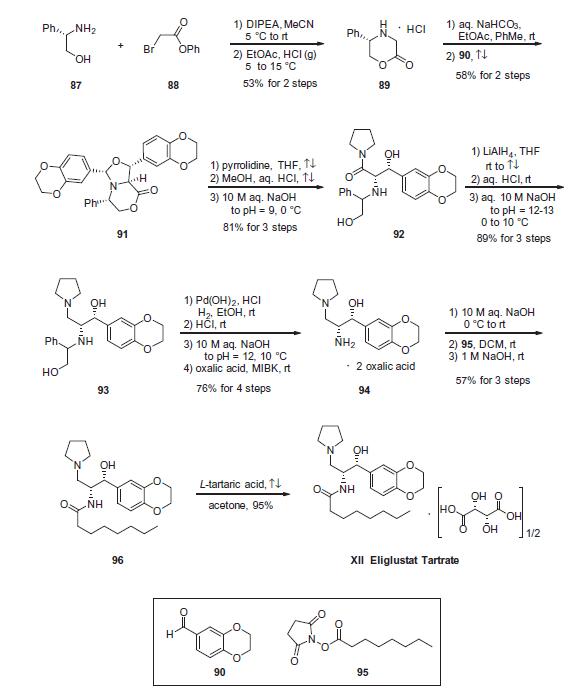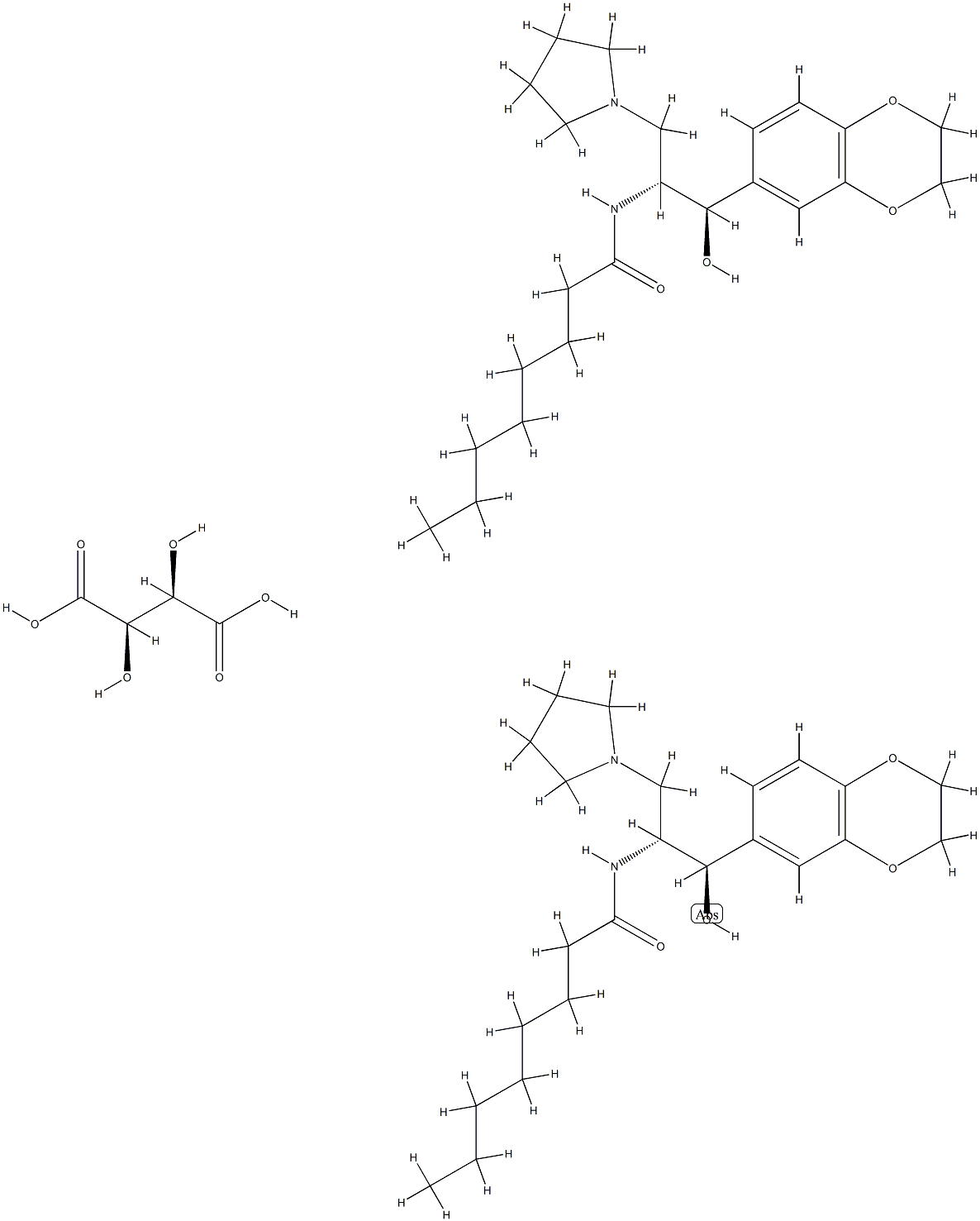Eliglustat tartrate, developed and marketed by Genzyme Corporation
(a subsidiary of Sanofi), was approved by the US FDA in
August 2014 for the treatment of nonneuropathic (type 1) Gaucher
disease (GD1) in both treatment-naive and treatment-experienced
adult patients. It is the first oral treatment to be approved for
first-line use in patients with Gaucher disease type 1, which is a
rare lysosomal storage disease characterized by accumulation of lipid glucosylceramide (GL-1) due to insufficient production of the
enzyme glucosylceramidase. Clinical complications include
hepatosplenomegaly, anemia, thrombocytopenia, and bone
involvement. Eliglustat is a specific inhibitor of glucosylceramide
synthase with an IC50 of 10 ng/mL and acts as substrate
reduction therapy for GD1; it has demonstrated non-inferiority
to enzyme replacement therapy, which is the current standard of
care, in Phase III trials.
Eliglustat Tartrate functions as an oral agent for treatment of Gaucher disease type 1, and lysosomal storage disorders in human. It also inhibits UDP-glucosylceramide synthase in mice thereby preventing Gaucher disease-associated with B-cell malignancy.
ChEBI: A tartrate that is the hemitartrate salt of eliglustat. A ceramide glucosyltransferase inhibitor used (as its tartrate salt) for treatment of Gaucher's disease.
Condensation of commercially available
S-(+)-2-phenyl glycinol (87) with phenyl bromoacetate (88)
in acetonitrile in the presence of N,N-diisopropylethylamine
(DIPEA) provided morpholin-2-one 89 upon treatment with HCl.
Neutralization with NaHCO3 followed by coupling with aldehyde
90 in refluxing EtOAc/toluene yielded oxazine adduct 91, which
was isolated as a precipitate from methyl-tert-butyl ether (MTBE).
The stereochemistry of the three new stereocenters in 91 can be
rationalized through the cycloaddition of an ylide intermediate in
the sterically-preferred S-configuration (generated by the reaction
of the morpholinone 89 with aldehyde 90) with a second equivalent
of the aldehyde. With the morpholinone in a chair conformation
in which the phenyl group is equatorial, endo axial approach
of the dipolarophile to the less-hindered face of the ylide and subsequent
ring flip of the morpholinone ring to a boat conformation
positions all exocyclic aryl substituents in a pseudoequatorial configuration.
Opening of oxazine 91 with pyrrolidine in refluxing
THF followed by addition of HCl in refluxing MeOH gave amide
92, which was reduced to amine 93 using LiAlH4 in refluxing
THF. Subsequent hydrogenation with Pd(OH)2 in EtOH cleaved
the phenylethanol group to give the free amine, which was converted
to dioxalate salt 94 by treatment with oxalic acid in methyl
isobutylketone (MIBK). Subjection of aminoethanol 94 to aqueous
sodium hydroxide followed by coupling with palmitic acid Nhydroxysuccinimide
(NHS)-ester (95) gave eliglustat as the corresponding
freebase (96) in 9.5% overall yield from 87. Salt formation
with L-tartaric acid (0.5 equiv) then provided eliglustat tartrate
(XII).

Eliglustat tartrate (Eliglustat hemitartrate) shows good potency with an IC50 of 24 nM and specificity against the target enzyme. Incubating K562 or B16/F10 cells for 72 h with increasing amounts of Genz-112638 (0.6-1000 nM) results in a dose-dependent reduction of both GM1 and GM3 cell surface levels. The mean IC50 value for inhibiting the cell surface presentation of GM1 in K562 cells was 24 nM (range 14-34 nM), and that for GM3 in B16/F10 cells was 29 nM (range 12-48 nM).
Presently, no formal studies have been conducted to assess interactions between eliglustat tartrate and other drugs. Because eliglustat tartrate is metabolized by CYP2D6, potential toxicity might be observed in patients concurrently treated with known CYP2D6 inhibitors. Commonly used CYP2D6 inhibitors include, but are not limited to, albuterol, amiodarone, bupropion, chlorpheniramine, cimetidine, diphenhydramine, fluoxetine, haloperidol, hydroxyzine, metoclopramide, paroxetine, sertraline and thioridazine. Known inducers of CYP2D6 include phenobarbital, rifampin and dexamethasone[1].
[1] Shayman, J A. “ELIGLUSTAT TARTRATE: Glucosylceramide Synthase Inhibitor Treatment of Type 1 Gaucher Disease.” Drugs of the future vol. 35,8 (2010): 613-620.




